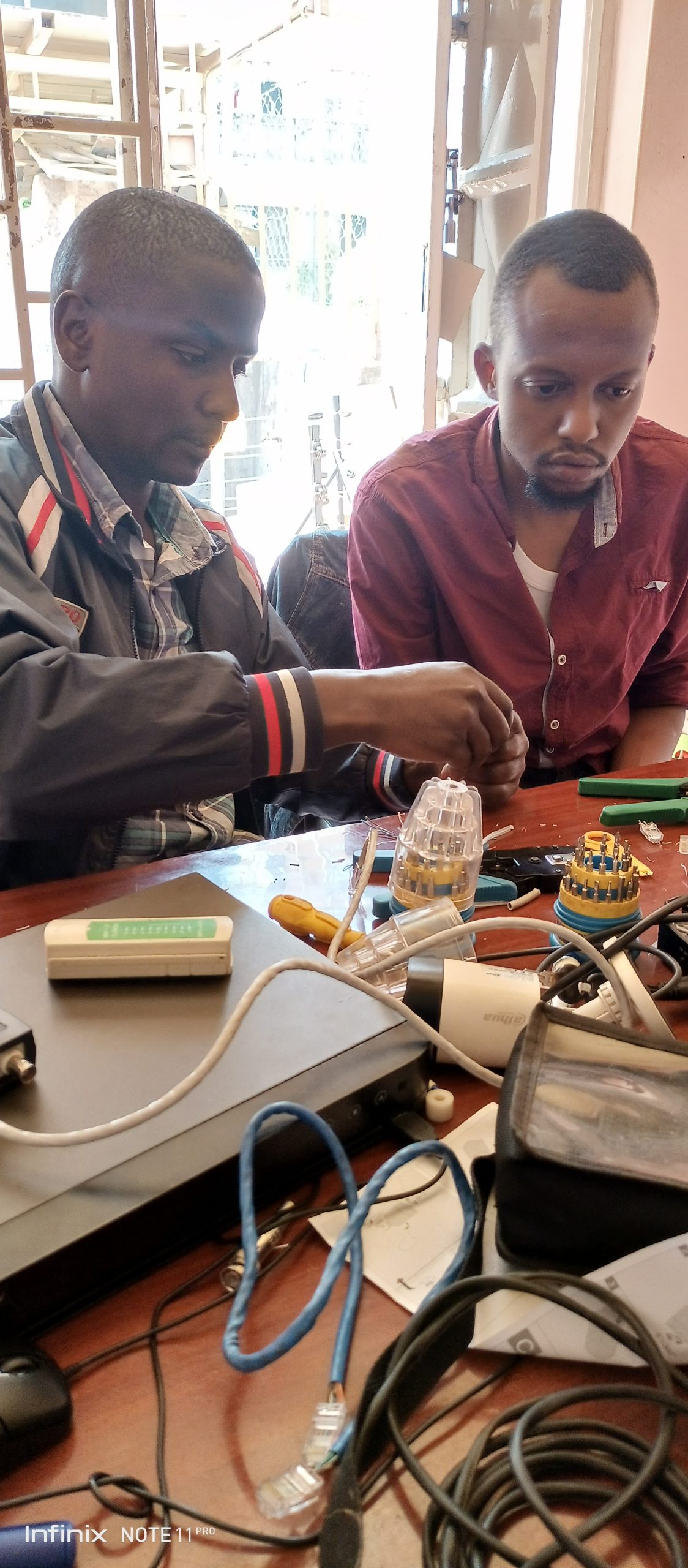LEARN THAT EXTRA SKILL. USE IT!!
Skills that sell . Results that are dependent on your effort.

- This event has passed.
CCTV Planning, Design & Installation Skills Training – Gen-Z Offer @KES 10K!!
July 15 @ 09:00 - July 19 @ 16:30 EAT
KES10,000
|
REQUIREMENTS TO JOIN OUR SECURITY INSTALLATION COURSES AS A TRAINEE: 1. Minimum qualification is KCSE D- 2. Full Fee payment before joining any scheduled program/ course. 3. Ability to attend and participate actively in all our tuition and practical sessions. Gaps in attendance will lead to the termination of your training without any recourse to a refund. |
CLASS SCHEDULE:
Mon- Friday: 9:00 – 16:30
Introduction
This training will explain the basics of some of the most popular technologies used in networking, CCTV Camera basics, configuration, and management including but not limited to the following:
Types of Networks – including LANs, WANs
The Internet and Beyond – The Internet and its contributions to intranets and extranets Types of LAN Technology – including Ethernet, Fast Ethernet, Gigabit Ethernet, 10 Gigabit Ethernet, PoE, etc
Networking and Ethernet Basics – including standard code, media, topographies, collisions, and CSMA/CD
Ethernet equipment– including transceivers, network interface cards, hubs, and repeaters.
This CCTV course provides comprehensive information required for Security Camera Engineer. Most IP CCTV security systems are very similar (IP Cameras and Network Video Recorders) hence it focus on providing key information applicable to most CCTV systems. It equips the learner with the capacity to gain knowledge that will be useful for any system he/she will encounter in the field and not just one particular make: Hikvision, Dahua (we use these two in our training), or any other brand.
As a part of my CCTV training you will learn the basics of IP Networks required to work with IP Cameras and NVRs: Ethernet connections, IP addresses, routers, and switches. The training also equips you with the skills on how to make use of tools useful for IP CCTV installation.
The CCTV installation course is also complemented with knowledge of HD and analog CCTV surveillance systems. You will learn about: the setup of DVR, the use of 2MP,3MP,5MP, or 8MP(4K – Ultra HD) cameras, HD camera formats: TVI, CVI, AHD, SDI, video compression: H.264, H.265, H.265+, frames per second, PTZ Camera and much more.
Venue: Kenvision Techniks Workshop
This 5-DAY course is designed to give participants practical knowledge of the Operation and Installation of CCTV Systems at a
- FOUNDATION LEVEL and then Gradually introduce them to a Higher Level of CCTV cameras that
 deals with
deals with - IP Cameras and
- Networking Skills.
SYNOPSIS Security comes second in Maslow’s hierarchy of needs indicating how basic and critical it is in our very existence. In fact, unless it is assured, no nation or individuals can move up the ladder of our needs. Apparently, it has become quite an issue everywhere in the world. CCTV is one of the surveillance technologies that have emerged as the preferred method of pre-emptive countermeasures in public and private spaces.
NB:
- Ever wanted how to know how to create a simple working network of devices?
- What about mobile network configurations?
- Still not clear about basic cabling techniques, various types of cables, their data carrying capacities (bandwidth), their terminations, associated devices, etc
- What about IP Addressing (NAT)?
- Do you consider the knowledge of
 how switches, routers, bridges, servers, etc work to be of great value to the kind of technician you want to be?
how switches, routers, bridges, servers, etc work to be of great value to the kind of technician you want to be?
You can get these skills and much more as extras when enrolling in our IP CCTV Training Program. This course is founded on giving you the best skills you can get on Surveillance Design techniques using customized auto-cad applications, lens calculators, measuring PPM, handling resolutions, understanding aspect ratios, lighting, configuring IP cameras to according to streaming standards such ONViF, PSIA, etc…
Qualification: On completion of the Course, having been successful in TWO examinations (one written, one practical) the participant will receive a Certificate of Proficiency from KENVISION TECHNIKS TRAINERS
